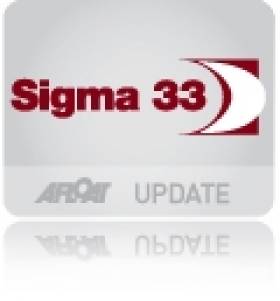Displaying items by tag: Maurice Byrne
The fifth 'Nora Barnacle Challenge' Sets Sail this Friday
The fifth "Nora Barnacle Challenge" takes place this year on Friday 20th August 2010 at 4p.m. in Dublin Bay. The event is a charity yacht race sailed in 11 Sigma 33 boats. The purpose of the race is to raise funds for the Blackrock Hospice. The event is run by 3 Sigma 33 sailors, Bobby Kerr, Paul McCarthy and Maurice Byrne - in association with their local pub "Fitzgerald's of Sandycove". The idea is to provide an opportunity to non-sailors to participate in a short race from Dun Laoghaire to Dalkey and back with the assistance of two experienced sailors.
This year it is expected that there will be over 100 participants sailing on the water. All the proceeds raised for the event are donated to the Blackrock Hospice charity to provide funding for much needed equipment. This event brings together the Sigma 33 sailors in Dun Laoghaire , the traders of Sandycove and Glasthule and the 100 plus participants who together provide the sponsorship and donations for this deserving charity.
This is the fifth year of the event and it is hoped that by Friday evening the group will have raised €75,000 since 2006 for the Hospice through donations and sponsorship raised by participants.
The Nora Barnacle challenge started in 2006 when three local sigma 33 sailors were challenged by the local cliental of Fitzgerald's pub in Sandycove, to settle a score "who was the best sigma sailor in the establishment". The challenge was accepted and the event was organised by the three sailors, Bobby Kerr of "Leeuwin", Paul McCarthy of "White Mischief" and Maurice Byrne of "Miss Behavin". To ensure fair play and that no one boat would have a competitive advantage the rules of the event stated that five members of the crew of each boat would be made up from people with no sailing experience, along with two experienced sailors and that the race would be used as an opportunity to raise sponsorship in aid of the designated charity, the Blackrock Hospice.
In keeping with tradition, all participants, spectators and supporters will retire to Fitzgerald's pub in Sandycove for refreshments and the official prize giving of "The Nora Barnacle Cup" presented by Tom Fitzgerald followed by the annual auction to raise additional funds. The official " Nora Barnacle Challenge" T-Shirt will also be on sale.
























































